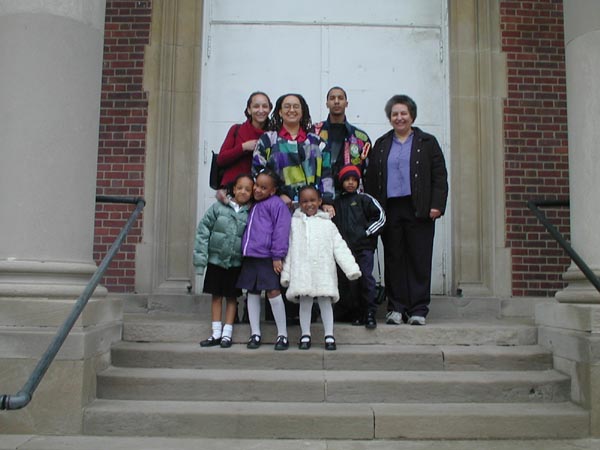Today I came across this Thanksgiving sermon from 1966 and decided to post it today, although this year’s Thanksgiving was several weeks ago. So many parallels between today and yesterday.
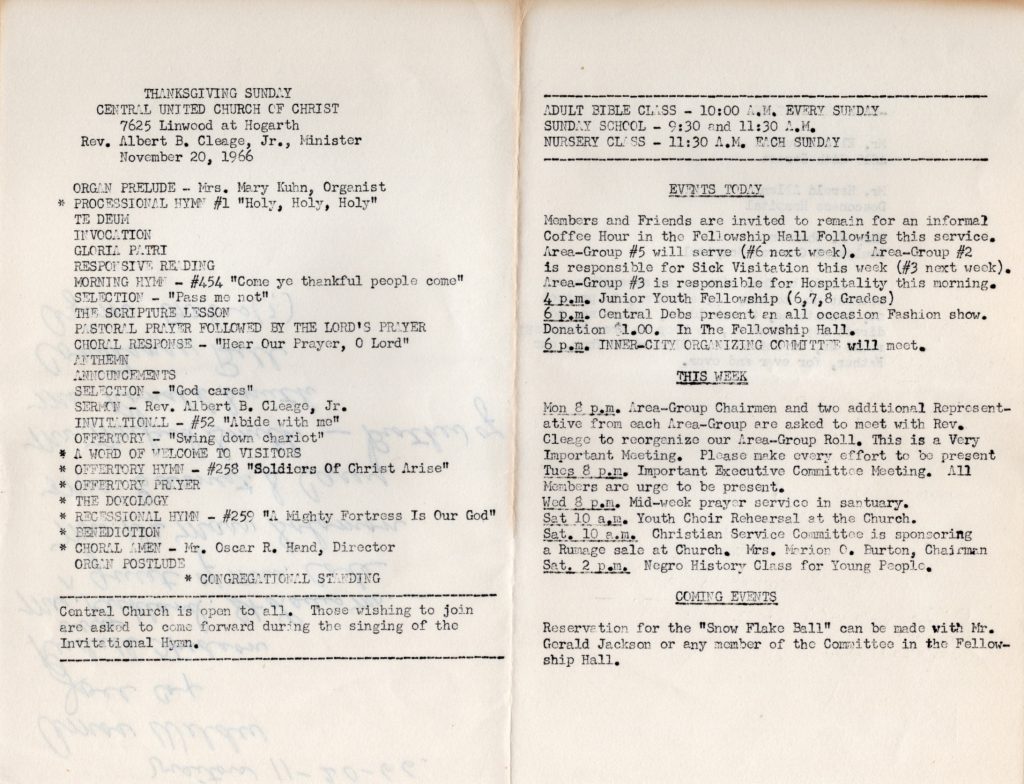
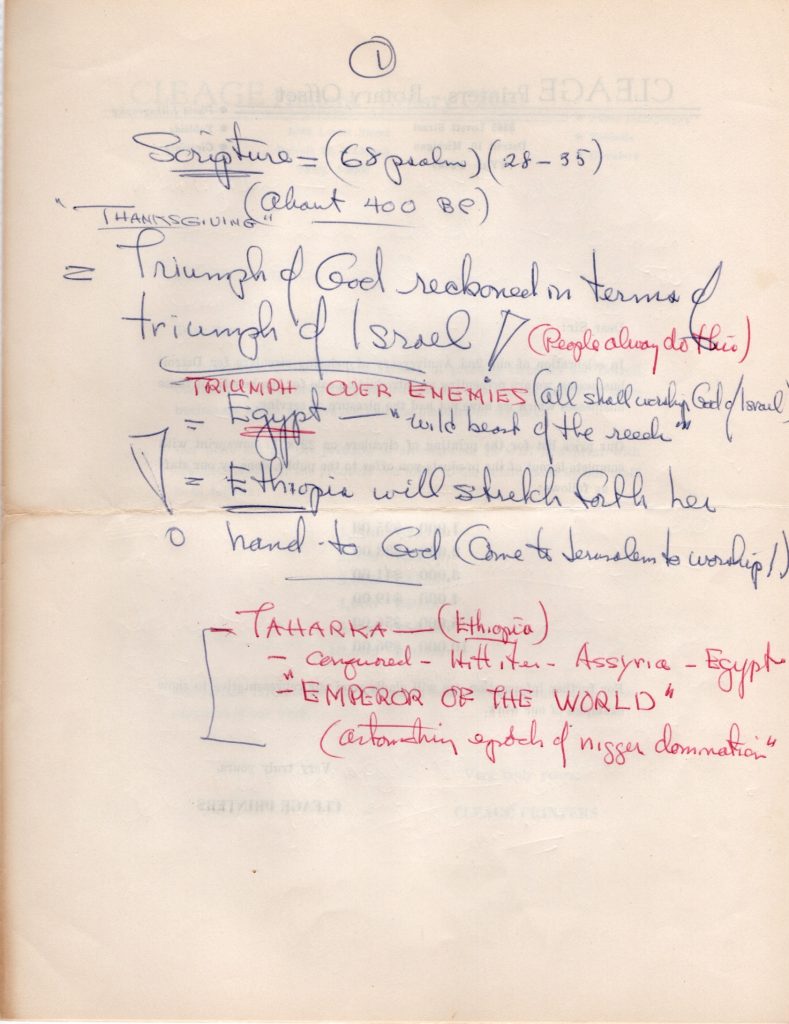
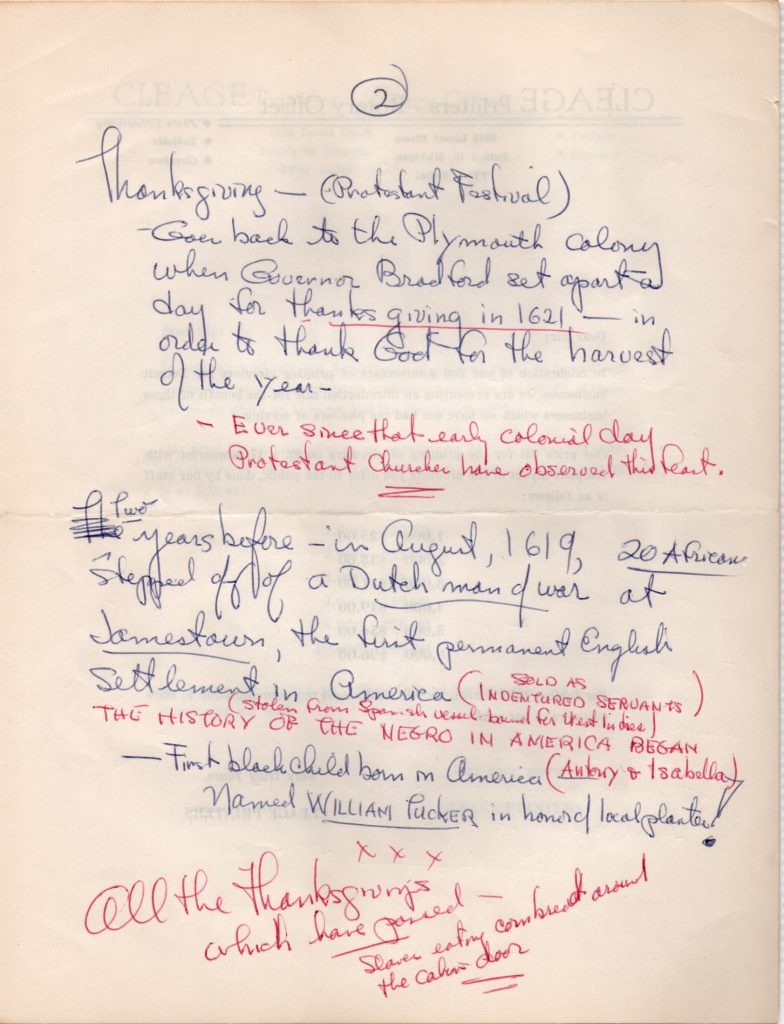
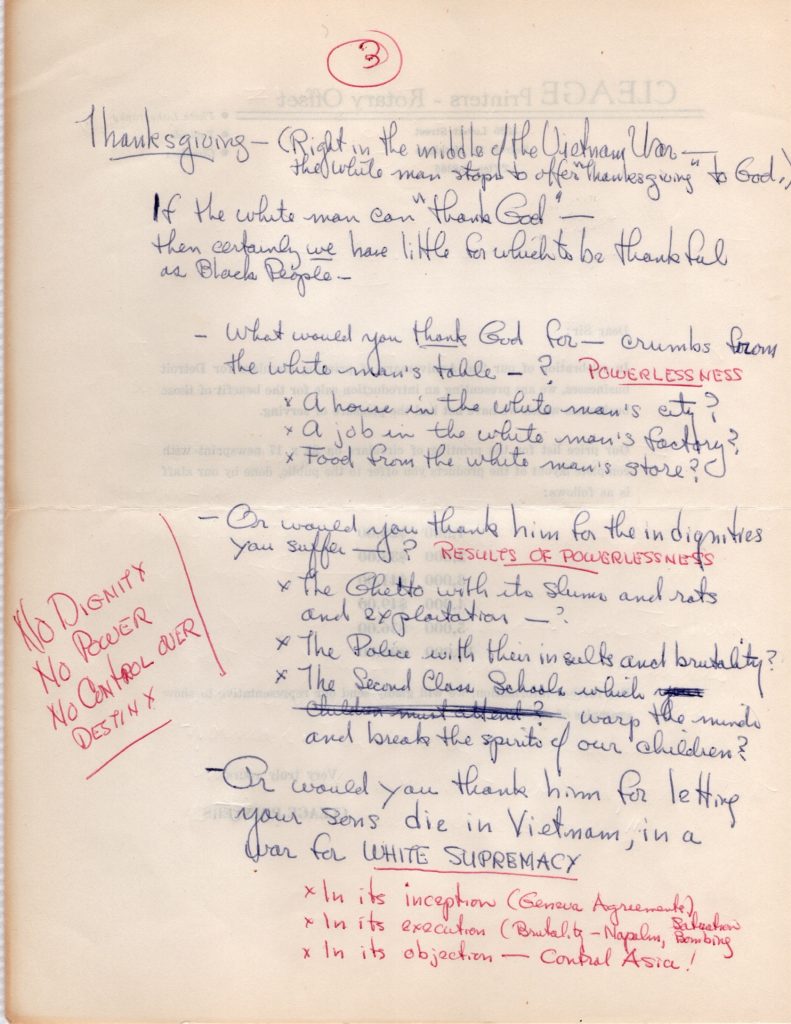
This is a transcription of a feature article that appeared in the black-owned Detroit Tribune, October 29, 1955. The archive of the Tribune can be found on the Library of Congress Web site “Chronicling America.” Follow this link to see the actual article The Detroit Tribune. I have added photographs from my family archive and corrected typos. Please do not reuse without permission and linking to this blog. Thank you.
****
(Editor’s Note: Due to the hugeness of this area, the Tribune is forced to publish this series in two parts. The second part will appear at a later date.)
The Tribune’s “Neighborhood of the Week” is a feature series designed to afford people who generally are not in the news an opportunity for expression and publicity.
This is the sixth area to be covered by the TRIB in Metropolitan Detroit. And by some standards is considered as the “most fabulous.”
Called Gold Coast
Nicknamed as the “Gold Coast,” because of its richly furnished and lavish homes, this new neighborhood was a direct result of the outlawing of restrictive covenants. It literally sprang-up during and after World War II when the city was jammed with defense workers, and was practically bursting at the seams. Old homes are being torn down to make room for the new expressway system and new housing projects. And old Detroiters had to have some place to go.
So, they invaded this area north of West Grand Boulevard and west of Woodward.
Each time the Negro population has to expand, in this and most U.S. cities, there is always the question of where are they going. The problem of dislocation and securing of housing was also true in this case, excepting that integration was prevalent as another problem.
Nevertheless, those who were dislocated, evicted or homeless moved into the “Gold Cost” area from all points over the city. This ingress was so fast that this section is hailed as the fastest developed in modern Detroit history.
What were the consequences of this swift development? As usual, your roving Tribune reporter will take you along with him and find out, visiting the churches, the business places and the “average resident” and let them tell you of their fabulous neighborhood.
Central Congregational
Let’s stop the young and dynamic minister of the Central Congregational Church, the Rev. Albert B. Cleage, Jr.
Since their (the congregation) activities for the day were a fine reflection on the residents of the area, we think their project “Work Day For Christ” should be publicized.
The Junior and Senior Fellowships of the church with the slogan, “Being Christian Means Helping Others.” And they carried out this slogan to the highest as each member contributed a full-day of labor to their world-wide missions on Saturday.
Here is how they were scheduled:
After breakfast at the parsonage at 8 a.m., they worshiped for about 45 minutes before starting to work at odd jobs, such as car washing, holding a bake sale, raking leaves, washing windows and others.
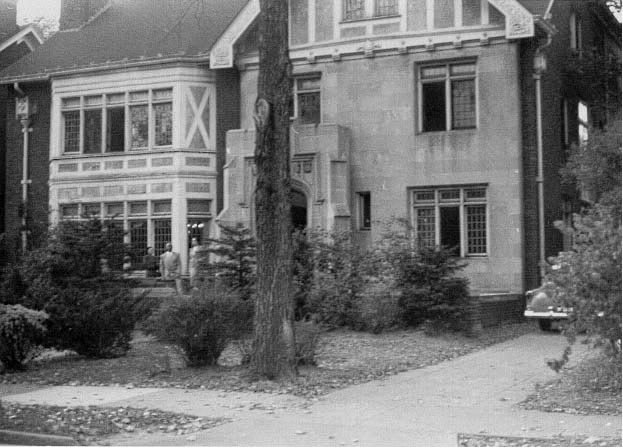
They reported back to the parsonage at 12:30 for a box lunch, then at 1:30 p.m. completed or started on other odd jobs until 5 o’clock when they went for supper, returning at 7 p.m. for a two hour workers party in the parsonage.
Full-Day of Work
This was really a full day for the youths, but they seemed to enjoy it with enthusiasm and eagerness to complete more than two or three jobs during the day.
The Youth Fellowship is geared “to make real demands upon their time, abilities and talents … we accept only those young people who are willing to participate in the total program.
“Young people who are interested only in recreational and social activities can find other organizations and clubs designed to serve their needs.”
Thus, partially reads a somewhat of a preamble for the youth to follow in pushing the church program which has three basic areas of Christian Living, meaning Faith, Action and Fellowship.
More than two hundred young people enrolled in the church’s Junior and Senior Fellowships contributed a day’s labor to raise funds for Congregational Christian World Missions.
A breakfast for the young people was served by a committee of mothers in the recreation room of the spacious church parsonage at 2254 Chicago Blvd.
Mrs. Eleanor Hughes served as chairman and was assisted by Mrs. Julian P. Rogers, Jr., Mrs. Marie Scruggs and Mrs. Barbara Martin.
The breakfast closed with a service of worship and consecration conducted by the Faith Commissions of the two organizations. Participating were Miss Phyllis Hughes, Miss Andree Keneau, James Gilliam, Jr., and Miss Sharon Allen.
The Car-Wash was held at the home of Miss Beverly Baker, 11340 LaSalle Blvd., and parents, church members and residents of the community kept the cars coming from 9 a.m. until 5:30 p.m.
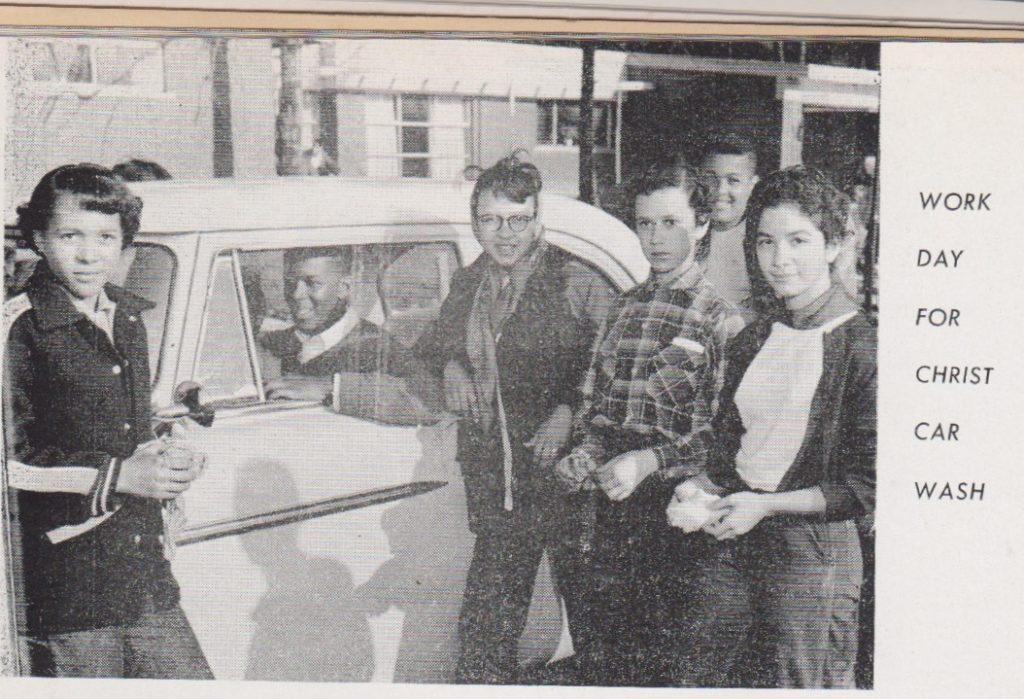
While the car-wash workers, under direction of Curtis Faire, were keeping their production line moving, the Bake-sale and odd- committees were conducting door to door canvasses.
The seemingly inexhaustible supply of baked goods was sold out by two o’clock.
The odd-job brigade raked leaves, took down screens and put up storm windows, scrubbed floors, cleaned basements, washed dishes, and took care of children for busy mothers, and the jobs continued to pour in until the 5:30 quitting time.
On Sunday, members and their parents were invited to a special service of dedication at Central Congregational church, with the pastor, the Rev. Albert B. Cleage, Jr., preaching on “Our Christian World Mission. Afterwards officers of the Fellowship group dedicated the money earned to Christian service.
The Youth Fellowship Choir under direction of Oscar R. Hand and accompanied by Larry Manderville, participated in the service. Miss Gail Payne rendered a solo.
2 1/2 Years Old
Central Church was organized just two and a half years ago by the Rev. Albert B. Cleage, Jr., with services of Worship held in the auditorium of the Crosman School, Hamilton at Clairmont. The church is now engaged in a city-wide Building-Fund drive to make possible the purchase of a church building.
The lack of a building, however, has done little to hamper the development of the church’s outstanding seven-day week program.
The church sponsors a Cub Scout Troop, a Boy Scout Troops, four Girl Scout Troops, two Youth Fellowship organizations, a children’s choir, a youth Choir, and a Boy’s Athletic Club with baseball and basketball teams in the inter-church Recreational League, in addition to a full program of adult activities.
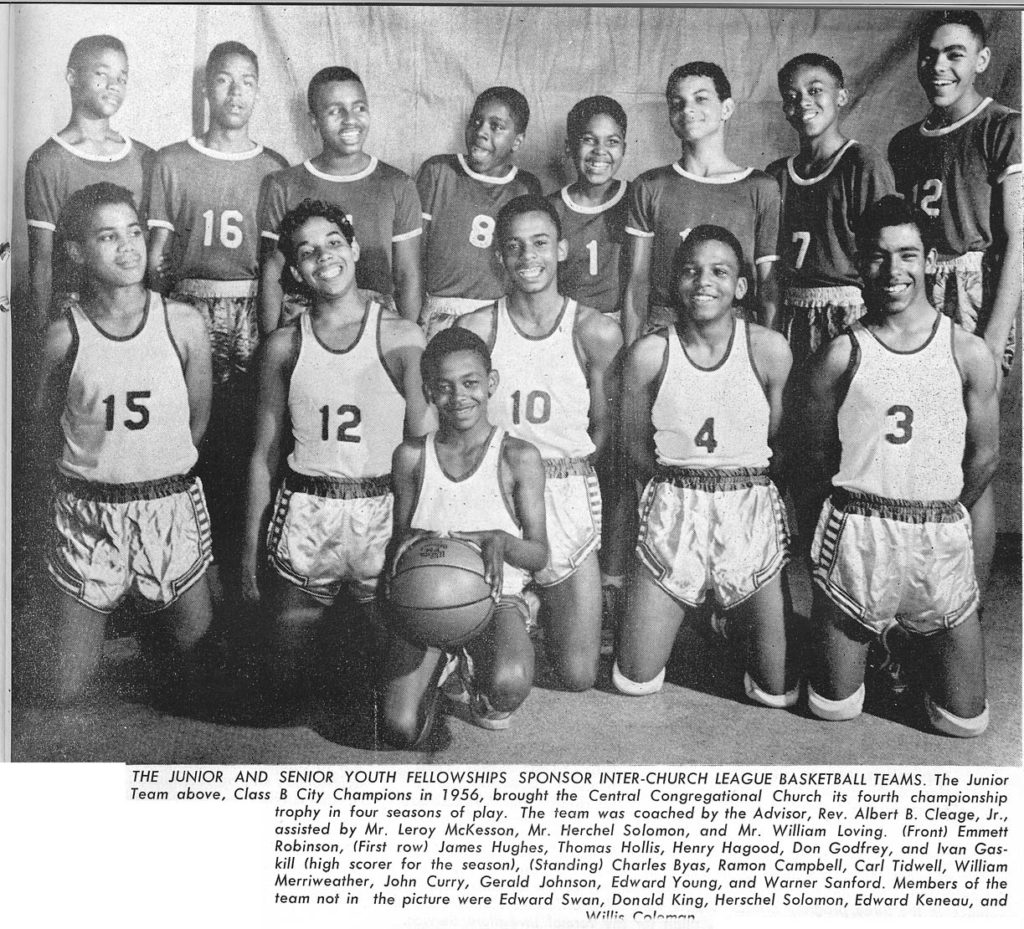
The Men’s Club’s weekly Bowling League and monthly Forum meetings, and the Women’s Cultural Committee Forums, Square Dances, and Bridge Parties are community-wide in scope.
Wayne Graduate
Rev. Mr. Cleage, Jr., is a graduate of Wayne University and the Oberlin Graduate School of Theology. He had completed two years towards his doctorate in religious education at the University of Southern California. Before returning to Detroit, Mr. Cleage held pastorates in Lexington, Ky., the Fellowship in San Francisco, Cal., and the historic old St. John’s Congregational Church of Springfield, Mass.
Before entering the seminary he served as Director of Youth Work at Plymouth Congregational Church at Detroit while employed as a Social Worker. The pastor is active in the Congregational Association of Detroit, of which his church is the youngest of twenty-seven.
Central and Plymouth Congregational churches are the only two designated specifically as Negro in Michigan.
Mr. Cleage serves as Chairman of the Social Action Committee of the Association, and member of its Board of Trustees.
He is on the Camp Management Committee of the Association’s Camp Talahi located near Brighton, Michigan, serving as counselor at both Camp Talahi and the Congregational State Conference Camp, Pilgrim Haven.
Adult Advisor
Mr. Cleage is also one of three adult advisors for the Detroit Association’s Youth Fellowship organizations. He is a regular guest speaker at other Congregational churches. During the past month he has spoken in Eaton Rapids, Dearborn, and Birmingham. He has conducted youth seminars at two churches in Detroit.
At the Fall Religious Education Workshop sponsored by the Detroit Association at the Gross Pointe Congregational Church, Mr. Cleage conducted the Seminar on Youth Work.
Thus, for the moment, we’ll end our visit in the “Gold Coast” area, hoping you will again visit it with us upon our second trip.
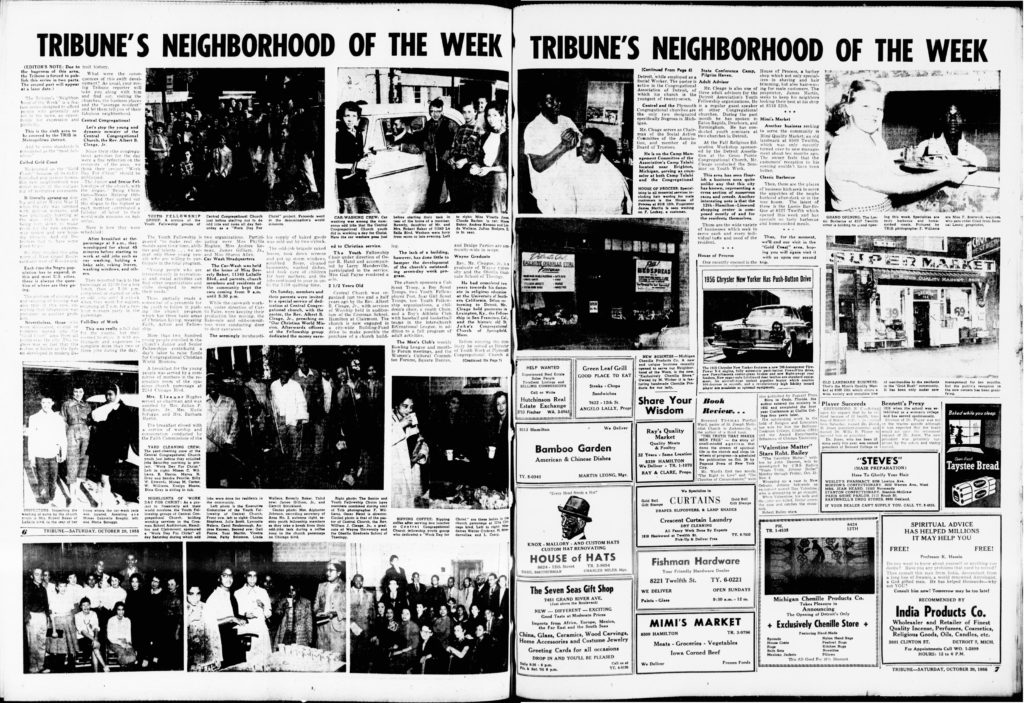
Transcription of an article by Robert L. Crump, which you can find at the bottom of this page and at this link to the Library of Congress “Chronicling America” where the archive of The Detroit Tribune can be found. Detroit Tribune September 28, 1957. I have added photographs from my personal collection and corrected typos. Please do not reuse without permission and linking to this blog.
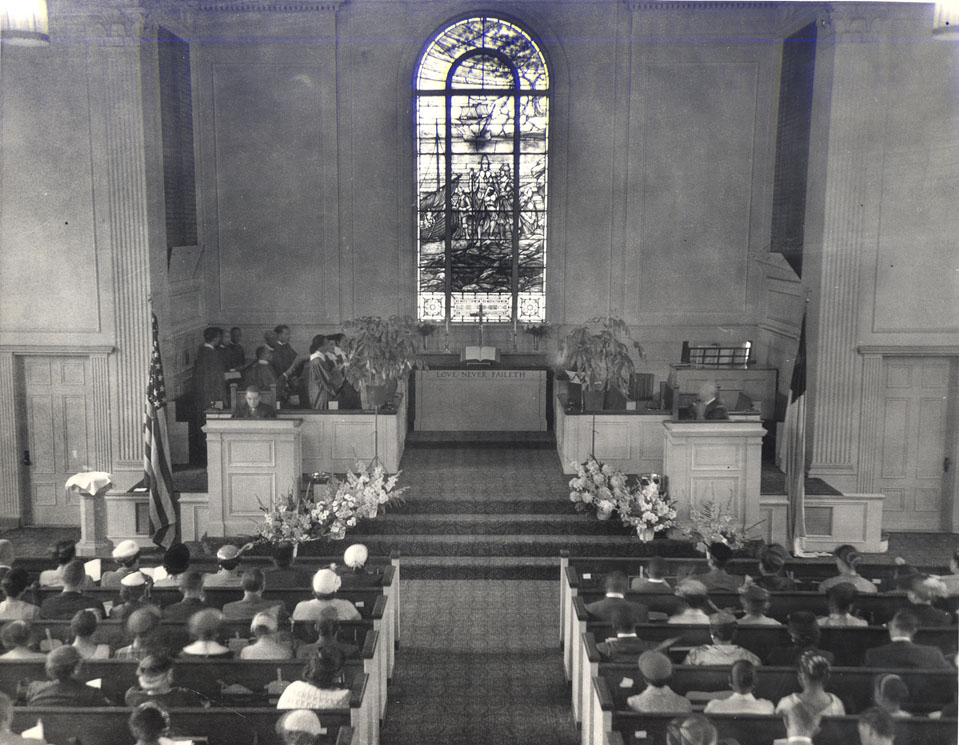
The day was hesitant, it’s disposition undecided. Sunlight broke though the clouds only to be shut out again. People walked through the streets aimlessly and carefree – but inside the Central Congregational Church there was no aimlessness, no hesitancy or indecision. The congregation was observing its “Home Coming Day,” their first service in a new building.
Those chimes you heard before entering the church were played by brother (Henry). Inside you listened to the moving musical prelude by Mrs. Dorothy Blaylock, organist. George Branham knew. He expressed the sentiments of all when he sang, “Bless This House”.
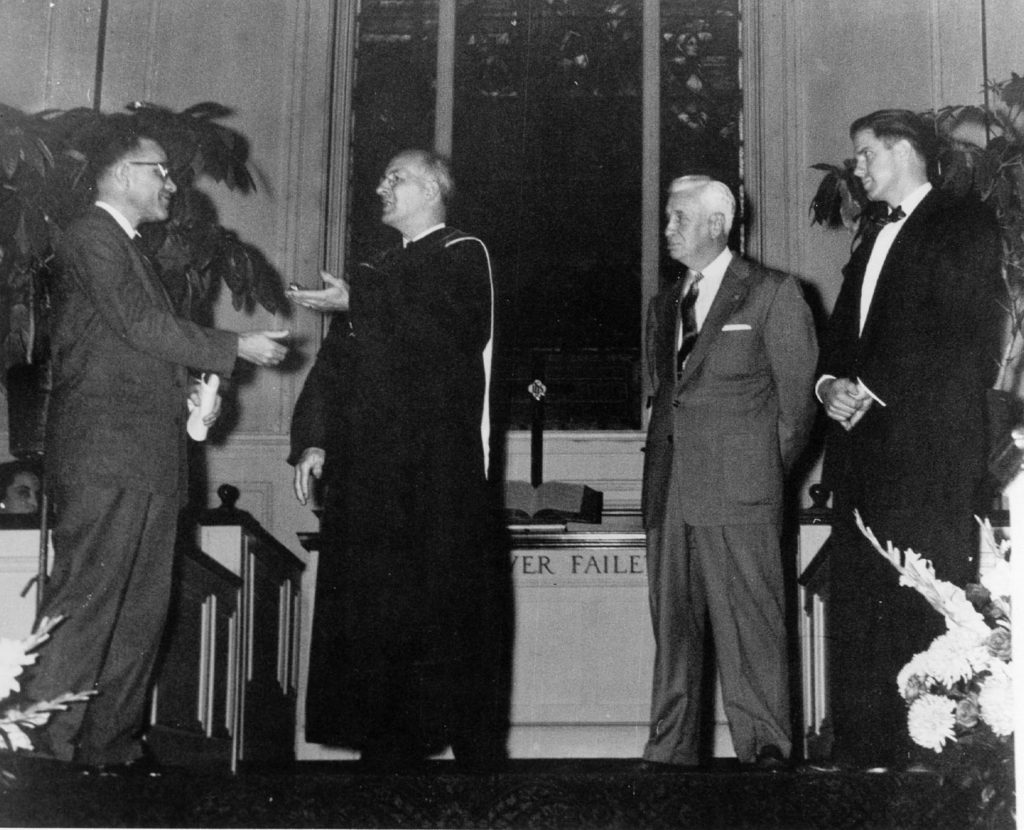
Then came the formal presentation of the key by David M. Brewster and Jack B. Paul representing Brewster Pilgrim Congregational Church; and accepting for Central was answer to the supplication of James W. Stephens.

As though they knew the “Bless This House,” the choir under the capable direction of Oscar R. Hand did the anthem “Praise To God” beautifully.
As you look to the altar you see a magnificent twenty to twenty five feet stained glass window. It is truly a masterpiece. The coloring is so tremendous that even when the sun isn’t shining on it, it still maintains vivid color life.
To the right of this window on the rostrum, Saturday Dr. Edward W. Wilcox for the congregational association on the left sat a man, who’s “dream” is now, reality, after four and one half years.
Now it was his turn to say “thank you” to those who had placed their shoulders to the wheel both physically and financially. I, and not I alone, watched him as he walked to the pulpit, he stood for a second and braced himself against the object that has for centuries been the symbol of self dedication.
Instead of the Ram that was tied in the thicket as in the biblical story of Abraham and Isaac he was offering himself as a living sacrifice, and dedicating.
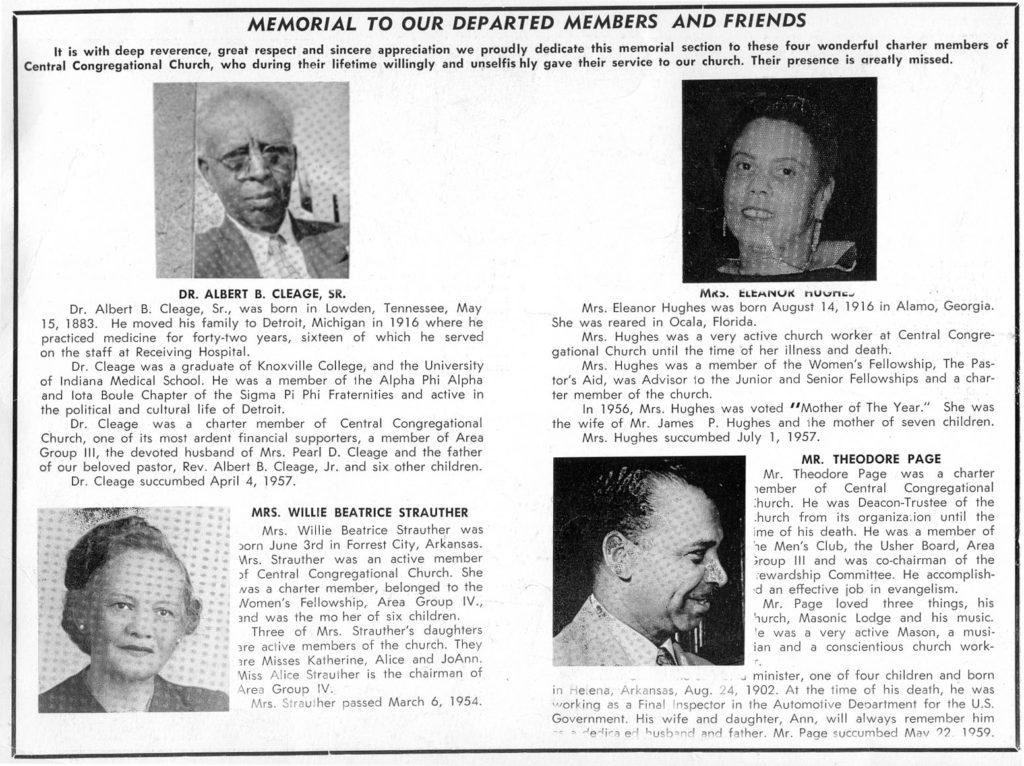
He mentioned the names of four people who have passed, Mrs. Willie Strauther, Mrs. Mabel Clarry, Mrs. Eleanor Hughes and his beloved father. Albert Cleage, Sr. The timber of his voice changed at the mention of his dad. I realize it was extremely difficult to hold back the tears. His mother, Mrs. Cleage Sr. in an effort to help, turned her head and her eyes from him, two sisters in the choir hoped almost in available tones he would not break another sister and three brothers in the congregation did the same, and in a split second the power of combined prayer was manifested.
He spoke of the great friendship that still exists between Plymouth Congregational Church and Central; also the debt of gratitude that cannot be paid to the Rev. Horace A. White of Plymouth for his encouragement and advice during Central’s trying times.
He talked of the church’s position in the community, of the Ministers role in the church some of the development of a Christ like community’ like being able to look your worst enemy in the face and honestly see good in him. Then, “This Man” mentioned Nashville, and Little Rock and the disturbance that was taking place.
He spoke of Faubus and Ike and as he did my thoughts sort of wandered to three words, “Faith, Hope and Charity.” and another line, “But the Greatest of these is “Love”. Then with Rare Richness and tonal beauty Melvin Thompson sang, “I talked to God last night.”
While he sat listening to the solo and looking over the filled auditorium I know he believed in the inscription on the alter, “Love Never Faileth.”.
I had the pleasure of again shaking the hand of a man who’s dream was now a reality: The Rev. Albert B. Cleage, Jr. minister of the Central Congregational Church 7625 Linwood Ave. at Hogarth.

In 1965 the idea of the Black Star Co-op was born at Central United Church of Christ. In 1968, the year after the Detroit riot, a grocery store was opened a block from the church. Due to a variety of reasons – inexperience of management and staff, costs of keeping enough stock, high prices – the store did not last long. Later the church operated a long running food co-op. Several people would go down to Eastern Market early Saturday morning and buy produce which was shared by everybody who paid $5 that week. There was no overhead and no paid staff. Later the church had a farm in Belleville, Michigan and the food for the co-op came off of that farm. Below is a short photographic story of the Black Star Market.

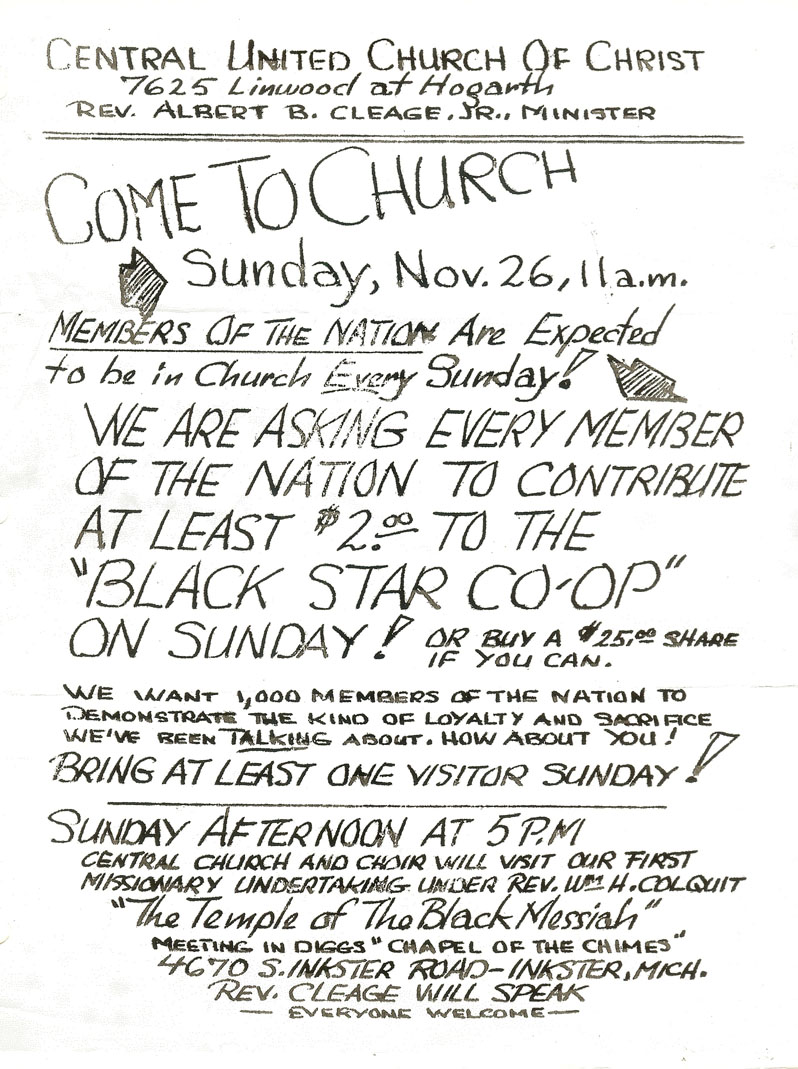
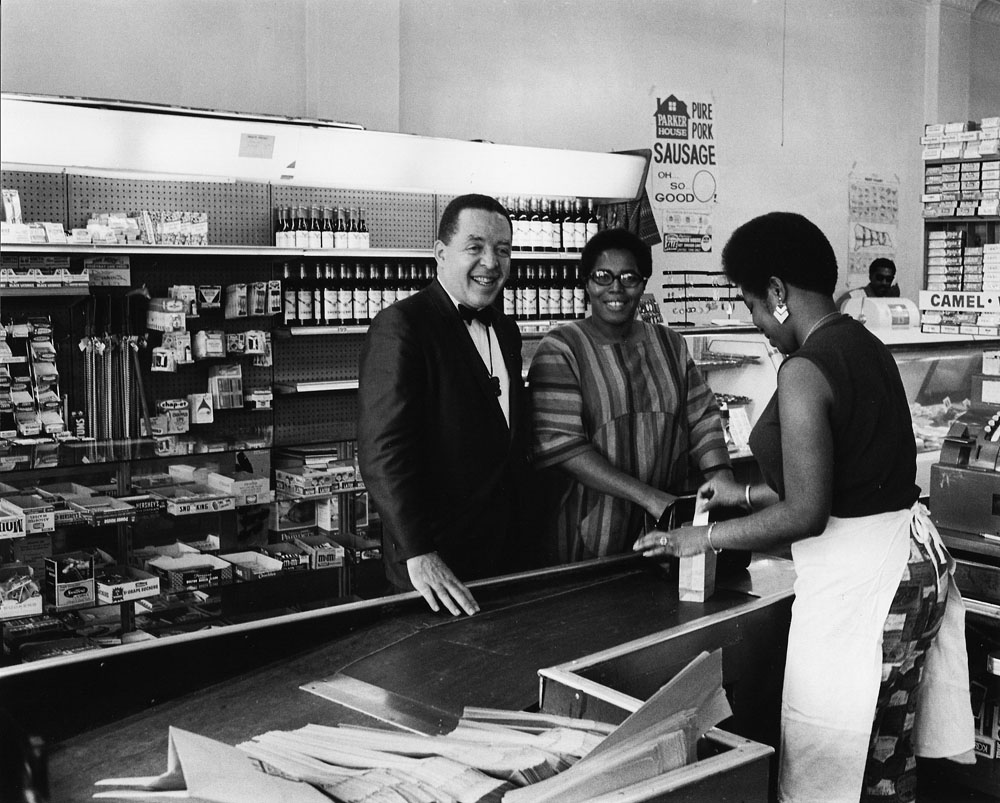
To read more about the church and the street it stand on, click on these links: “L” is for Linwood (About the street of Linwood), “H” is for Linwood and Hogarth (About the church).
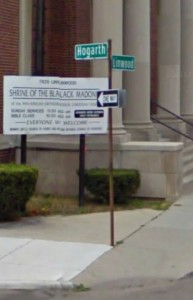 This post continues a series using the Alphabet to go through streets that were significant in my life as part of the Family History Through the Alphabet Challenge.
This post continues a series using the Alphabet to go through streets that were significant in my life as part of the Family History Through the Alphabet Challenge.
The church still stands on the corner of Linwood and Hogarth in Detroit. It has gone through several names through the years, beginning as Central Congregational Church in 1953. It became Central United Church of Christ after the merger of the Evangelical and Reformed Church and the Congregational Churches in 1957. In 1967, after a large mural of the Black Madonna was painted for the Sanctuary, it became the Shrine of the Black Madonna. My father was the minister. I am going to write about my memories from the 1960s as I was growing up.
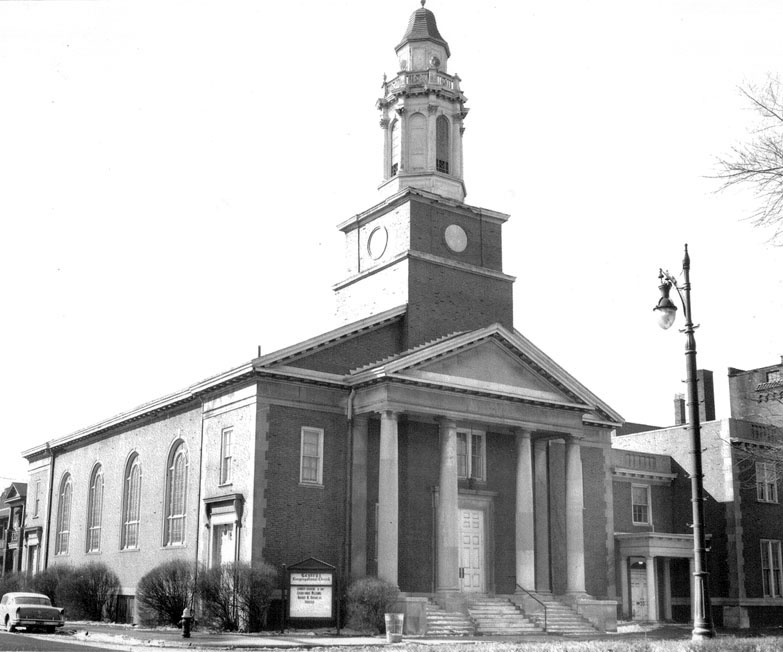
I remember many hours spent at church. There were church suppers and political meetings. There were Christmas Eve services, Christmas caroling and my father’s annual “Little Patricia” Christmas sermon. He gave these for several years. They featured a little girl living in a cave with her family following a nuclear war. I think the last time he gave this sermon she had two heads. I remember a bazaar with booths of handmade items to buy as gifts and game booths with a shooting gallery. The year I remember best was 1962, during the Cuban Missile Crisis of late October. A nuclear war seemed all too possible. I was 16.
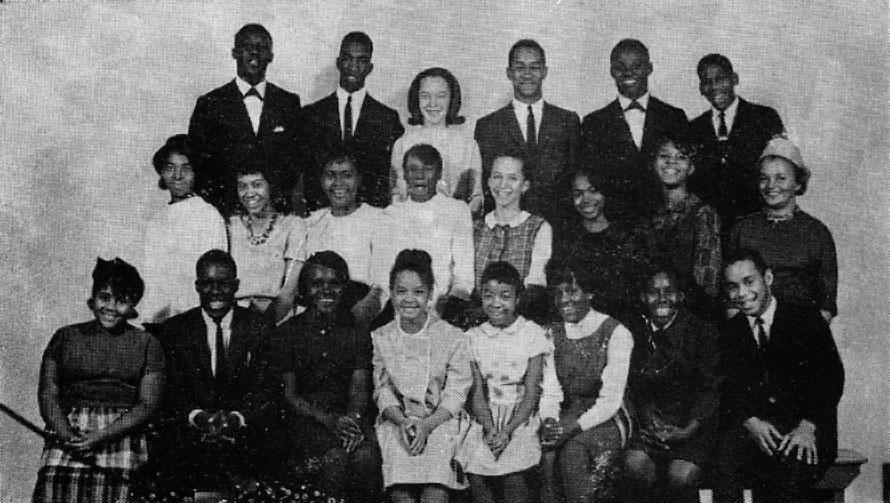
I remember Youth Fellowship meetings, where we talked about what was happening in the city, and around the country. Afterwards there was a social hour. Standing next to the coke machine and not being asked to dance, while at the same time, dreading being asked to dance, is not one of my happier memories. Social hour became less stressful once a ping pong table was added for those of us who didn’t dance much. I remember Workdays for Christ where we spent the day doing yard work to raise money for international service projects. And the “Friendship Circle” where we held hands and sang camp song like “Tell Me Why The Stars Do Shine” and “A Friend on Your Left and a Friend on Your Right”.
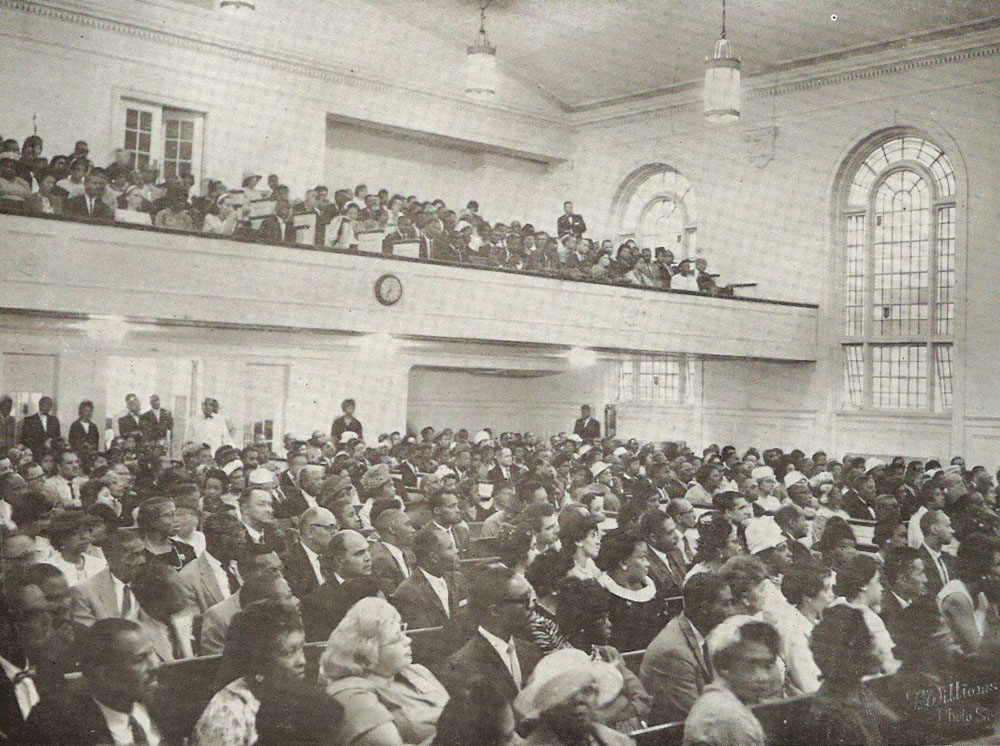
I remember the choir director, Oscar Hand (far right above) singing and the time he held the door open for someone stealing a typewriter because he thought it was the repair man. There was a wonderful production of “South Pacific” one year. There was the tragic and shocking murder/suicide of two married choir members. They had been having a clandestine affair. Mostly though I remember the good singing Sunday after Sunday.
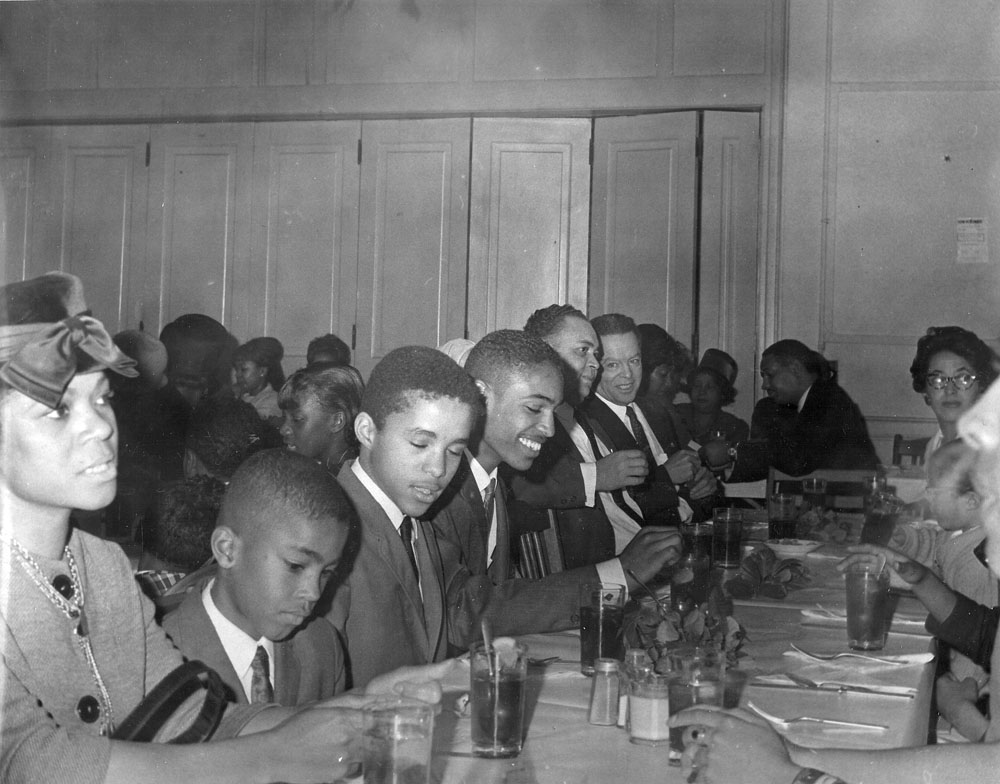
There were lots of church dinners. All members were organized into Area Groups that raised money and sponsored events for socializing. Sometimes Area Groups sold dinners to take out. I remember one such sale. Nobody was coming in to buy the dinners until one of the women suggested burning onion skins. They laughed about it, but someone burned some onion skins and people actually started to come.
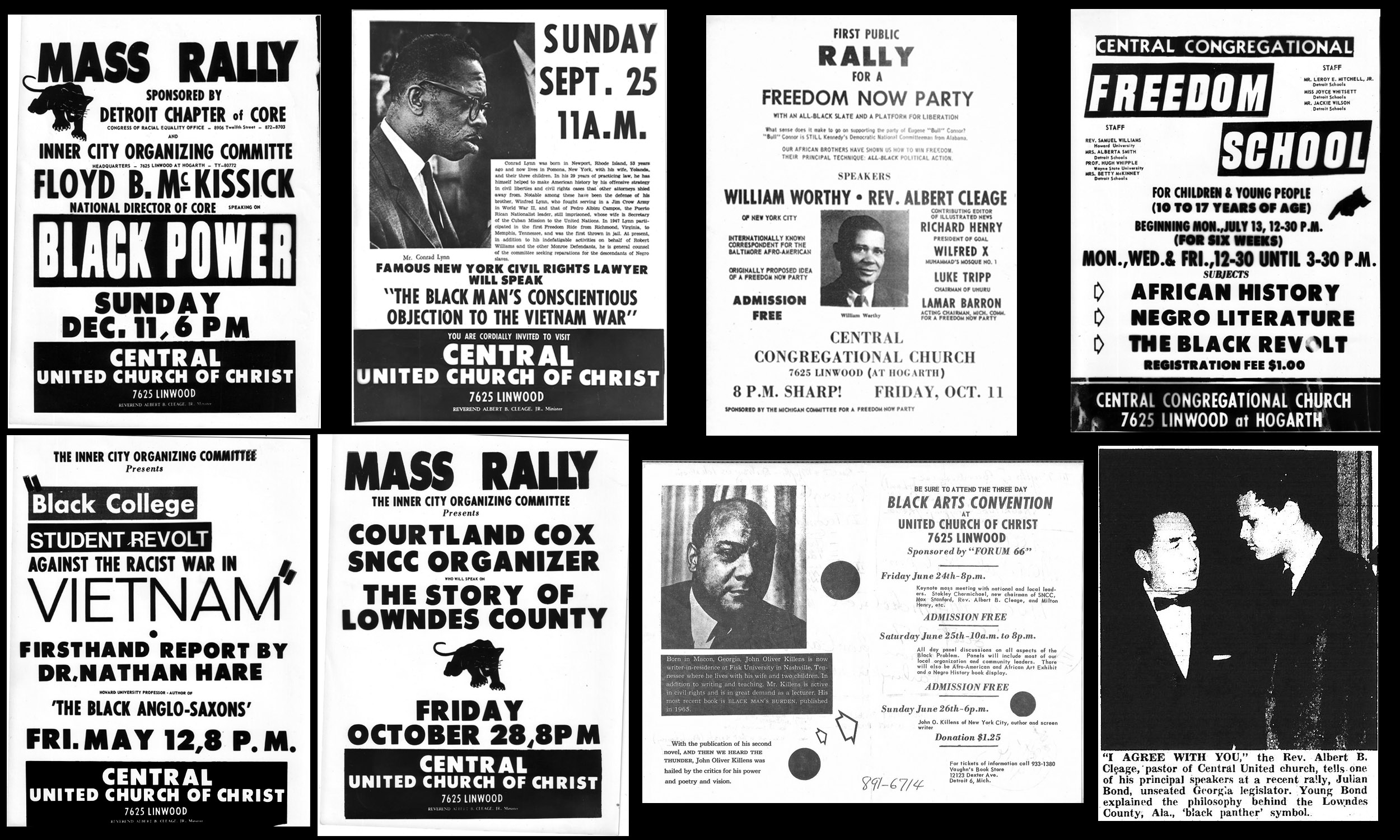 The Church was fully involved in the movement for equal rights and black power. There were always speakers and rallies and seminars.
The Church was fully involved in the movement for equal rights and black power. There were always speakers and rallies and seminars.

My parents divorced when I was 8. We lived with my mother but often spend the weekends with my father. He would start writing his sermons Saturday night. He wrote at the kitchen table. There were piles of old mail, old sermon notes and who knows what, piled up at one end of the table. There was enough space for the three of us to eat and for him to write. He wrote late into the night, sometimes taking breaks to come in and comment about what we were watching on TV or to order some shrimp from Jags up on 12th street. He never finished the sermon on Saturday. Sunday morning he would get up early and continue writing until the last minute when we would get in the car and drive down Linwood to church. Sometimes there were slow drivers in our way or people had already parked in his usual spot so he had to park farther away. At that time, he always parked on Lamothe, which was what Hogarth was called on the other side of Linwood. Service started at 11. Sunday morning excitement – would we make it!? We always did.
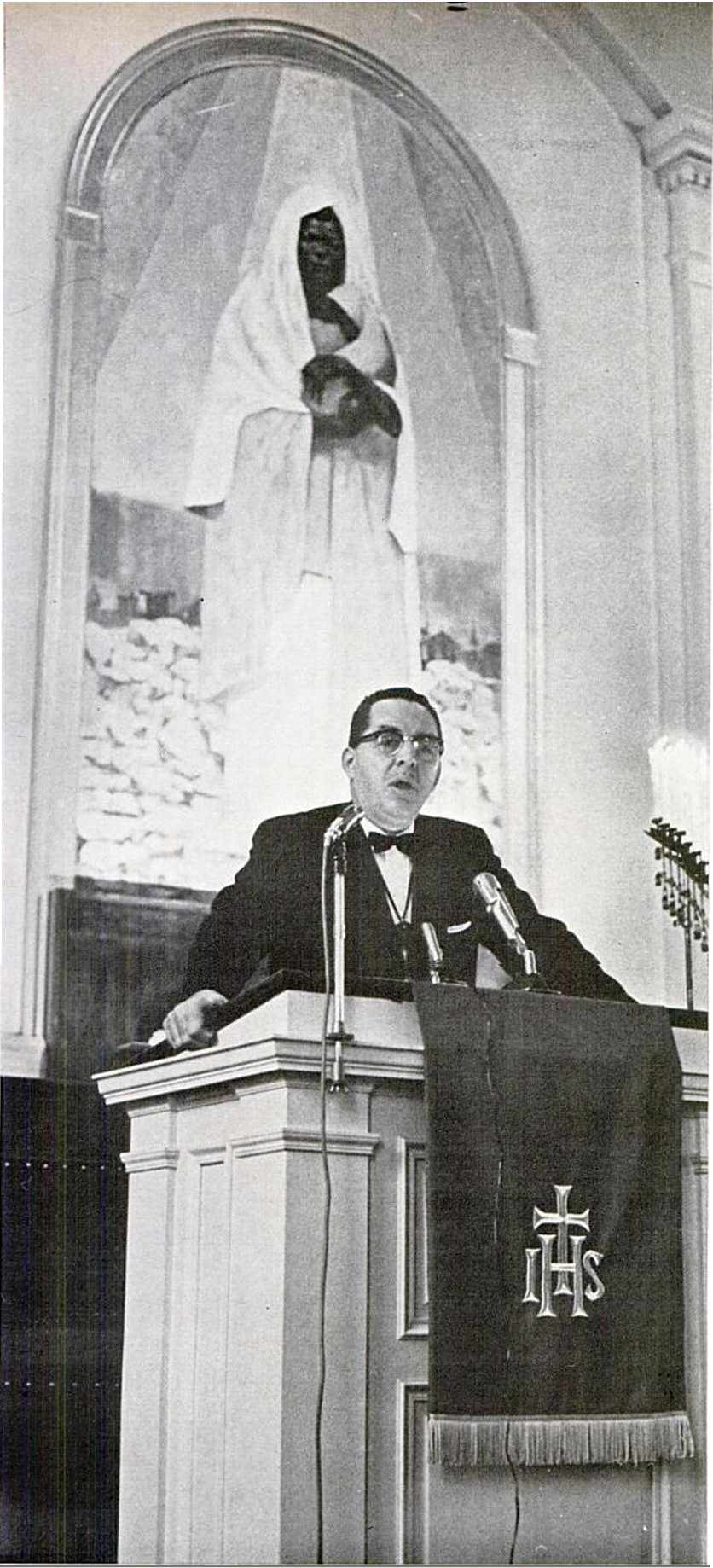
The bulletin and sermon notes below are from Sunday, July 3, 1966.
His sermons always spoke to what people needed to understand about their lives in the present day. And they were always timely. Someone once asked me if he planned and wrote them maybe weeks or months ahead of time. He didn’t. And you could tell because of the current issues he always included.
